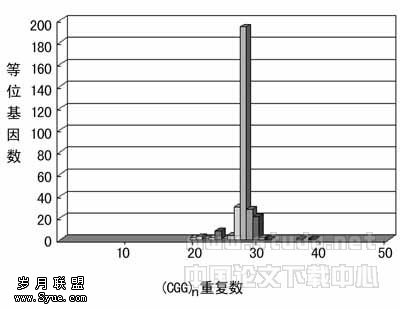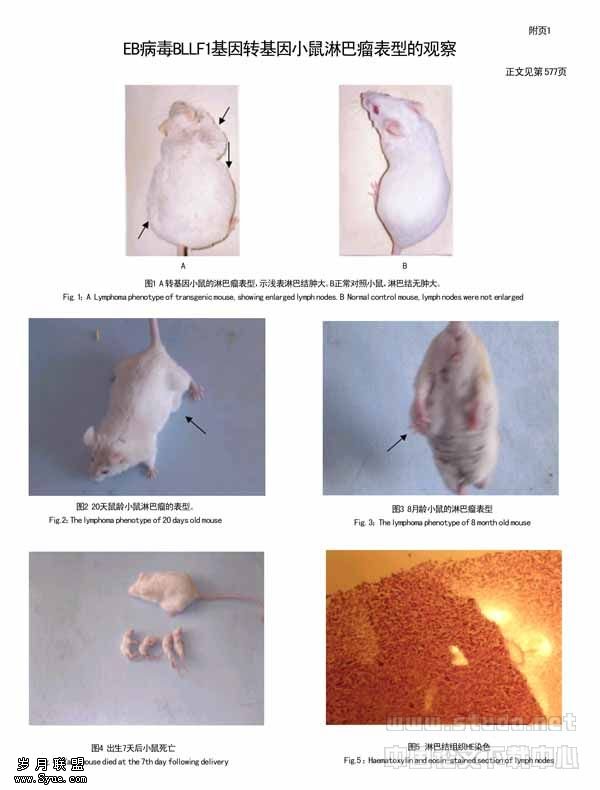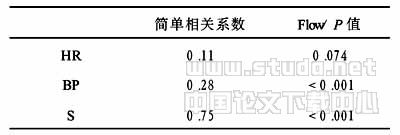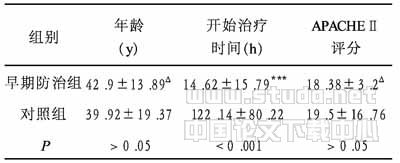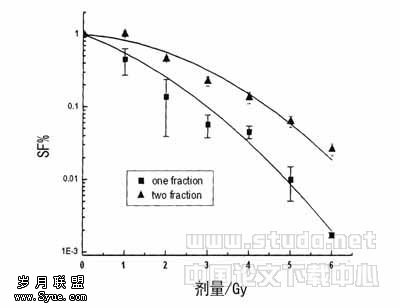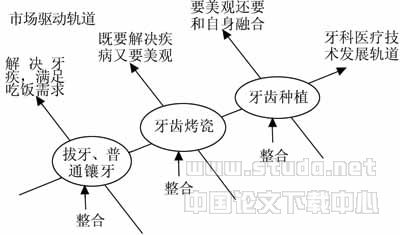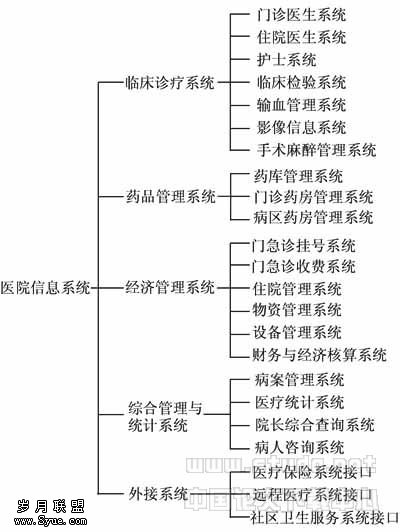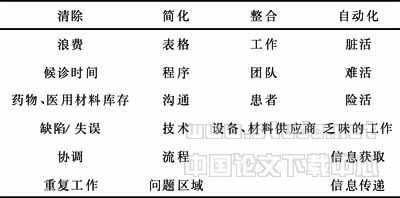Its reproducibility, applicability, reliability and comparis
作者:Nimet ünay Gündogan Nezih Durmazlar Aysegül Kocak Altintas , Koray Gümüs
【摘要】 Present a new computer-adapted color vision test (NCACVT) and explain its reliability and value in practical application. METHODS: Farnsworth-Munsell 100 Hue test (FM100HT) and Holmgren tests had been modified and adapted to computer application. Classic method of Ishihara pseudoisochromatic plate test (IPPT) was assumed to be a convenient screening tool for color blindness; therefore the subjects were classified as color defective group (Group I) and control group (Group II) according to the Ishihara test results. Group I consisted of color defective 13 subjects (12M, 1F) aged between 19-29 (median 21) years old and Group II consisted of non defected control group of 13 subjects (8M, 5F) aged between 19-28 (median 22) years old. In order to investigate color sensitivity in both of groups, all subjects were tested with both FM100HT and NCACVT. The findings from the classical IPPT, FM100HT, and NCACVT methods were statistically compared. The error scores of NCACVT and FM100HT in two groups were analyzed by using Mann-Whitney U Test. RESULTS: The differences in error scores were statistically significant respectively (U = 169, P <0.05; U =153 P <0.05). The cut-off point for diagnosing color vision deficiency according to NCACVT was found 23 by using receiver operating characteristic curve (ROC). According to cut-off error score of 23, NCACVT was found 100% sensitive and 100% specific in screening color vision deficiency. CONCLUSION: These features make this test a dependable, original ophthalmic practical screening test according to Harper& Reeves.
【关键词】 color vision; computer-adapted test for color vision; FM 100 Hue test; holmgren test
INTRODUCTION
Parallel to the contemporary technological advancements, computers have been used more and more effectively in medical research. Utilization of computers for different fields had not been cost-effective before, but nowadays, many computer programs can be easily obtained at minimal costs and can be used in each and every level of scientific studies.
There are two important tools for computerized color processing: the monitor and the video-graphics card. Improvement in the optical quality of computer-generated monitor color images has been one of many important developments in computer technology.
Trichromatic monitors have replaced the monochromatic ones. Color image resolution has reached to 24 bit. Mathematically speaking, this means that it is possible to generate 224 (16 777 216) different color hues in a computer monitor. Even, some of these different Red/Green and Blue triplets can generate similar hue. But in spite of this it is an enormous range, enabling us to do experimental research on color discrimination and sensitivity[1].
The most common testing method utilizes Ishihara's IPPT for the classification of congenital color vision defects[2, 3]. This test consists of polychromatic cardboard plates. These plates are printed matter and inevitably lose their isochromatic features. In addition, different editions of these booklets may differ in color consistency. Another fact is that it is impossible to standardize the lighting conditions and testing time for each subject[2].
The Holmgren Test is another method for color vision testing[4]. The subject is given three pieces of colored yarn, and asked to sort out strands of identical colors from a bunch. Nevertheless, tactile sensation as well as color vision is involved in this test. Therefore, the confounding effect of textures instead of colors, in discrimination, should be eliminated. In addition, pieces of yarn may fade by time, and colors may become paler.
The FM100HT is a sensitive and accurate test for color discrimination. It identifies the zones of color confusion in congenital or acquired color vision defects. In this test, there are 85-colored pastel caps arranged in a numerical order according to a color sequence which is quite obvious for a normal subject [5, 6]. When studied with this test, the subject is given these colored caps and asked to align correctly. The results of the test are recorded on a circular graph showing the errors made by the subject as deviations from the circular pattern. The greater the error score, the farther it is plotted from the center of the circle. Color deficient persons make characteristic errors in arranging the caps. Acquired color vision defects often impair hue discrimination. Confusion is predominantly seen between yellow and blue colors. In the other hand congenital color defects confusion are seen between red and green colors.
These colored caps have colored cardboard in their centers and are apt to get paler in time. Test time varies considerably between subjects and it is not possible to standardize. It is also important that this test requires quite a lot of training for the tester and many mistakes can be made by manually calculating the total error scores. A major disadvantage of this test is the laborious and time-consuming calculation needed to score the results and plot them on a chart for interpretation. On the other hand, computerized color vision test methods have many advantages as it was mentioned before[6, 7].
We have created computer emulations of the FM100HT using a commonly available personal computer. The presenting NCACVT program, written in Borland Builder 5 in C++ language, performs the calculation and reports both the individual color cap error scores and the total error scores. Our color monitor was calibrated to a standard display of colors using a special computer program without using an external hardware. Standardization of color displayed from the monitor was made by qualitatively. By means of this NCACVT we overcame the difficulties, such as color fading, background illumination, response-time, and eliminated senses other than vision. We are able to store the results for further studies.
We propose that, this original test for subject's color discrimination ability is practical, cost-effective, sensitive, specific, reproducible, and reliable.
MATERIAL AND METHODS
Ishihara's test was modified as a mass-screening test into a series of slides, and projections were used to screen color-deficient persons among the medical students[8, 9]. Presence or absence of color vision deficiency was assessed with classic Ishihara test and further evaluated with FM100HT. A subject who failed in both tests without any organic eye disease, which mainly affects on red and green color discrimination, was considered to have congenital color vision deficiency (CCVD). Thirteen students (12 M, 1 F) with CCVD aged from 19 to 29 years (median 21) established Group I; and 13 students (8 M, 5 F) with normal color vision formed Group II aged from 19 to 28 years (median 22). All subjects had a complete eye examination at the university ophthalmology clinic and had best corrected visual acuities of 20/20. They were required to wear their untended glasses during testing when necessary. These subjects were tested with, IPPT, FM100HT, NACVT.
Application of IPPT This test consists of a series of numbered color plates. The plates are made of dots of the primary colors printed on a background mosaic of similar dots in a confusing variety of secondary colors. The primary dots are arranged in numerical patterns that cannot be recognized by patients with deficient color perception.
Subjects were tested in the same room with adequate daylight. Plates were shown to them in a vertical orientation, from a distance of 1 meter. Responses were noted down on a pre-designed form[2. 3, 9].
Application of FM100HT Boxes containing the colored caps were put on a table with black background, illuminated by a fluorescent day light lamp (Philips TLE 22 W 54 diurnal Circular) from a 40 cm distance. Subjects were asked to arrange the hues in any order that they think is correct. They were allowed to take their time in arranging the colored caps. Error scores were calculated and were plotted on a specially designed circular graph[6].
Introduction of NCACVT Brightness, saturation and hue were the main characteristics of colors. Intensity or brightness was represented as quanta per unit time from a unit area of radiating emitter. Depth of color was saturation, and hue was created by the wavelength of light. Different monitors and video - graphics cards may lead to substantially different colors. In this study, a special computer program was used for the standardization of the monitor colors (wiziWYG program from PRAXI soft Inc) before every single test stage[1]. Afterwards, our NCACVT was run. We had a subjective standardization process during application of NCACVT that we have used software. When we consider that this new computer program will be used in daily practice of clinicians in the out-patient settings or at the place where quick and reliable assessment of color vision deficient as term applies normal trichromatic vision subjects must prepare and makes standardization on a standard monitor with a standard VGA card on it with practical monitor standardization software. Where we have been used WIZIWYG; Proxisoft? This software was written by using Borland Builder 5 in C++ language compatible with Microsoft Windows operating system. The desktop configuration consisted of a P III processor, standard 24-bit video-graphics card on it and a monitor with 85 Hz. horizontal frequencies and resolution of 800x600 pixels. The first image of the program is in a circular order of 30 round shapes, each having a different color (see Figure 1A). These colored circles are numbered on the screen and are separated by equal distance in a circular fashion. These 30 different color hues were created using HLS color naming space with a programming algorithm derived from RGB system of Microsoft so as to have constant saturation and brightness but differing hue components. The hue component presents the changed parameters of each color. This avoids the possibility of color blinds to discriminate colors by saturation and/or brightness.
Application of the NCACVT All subjects were well informed by the tester about the test procedure. There is an introductory mini-test at the beginning of the principal testing program. This introductory phase there were 7 different color caps were showed, which are recognizable for both in normal and the color blinds. The subjects compared the sample test color with the circle colors by moving the mouse anticlockwise for matching until subject reaches the corresponding color cap and clicks on the mouse (Figure 1A). After this mini-test illustration the principal test was started. The colored circles are numbered on the screen and are separated by equal distance in a circular fashion. The principal colors representing red, green and blue (RGB) are numbered as 1, 11, and 21 respectively and they are shown with bold arrows. Numbers 6, 16 and 26 are the colors created by mixing two of the principal colors of the RGB system and they are shown with light arrows. In other words, these are the cyan-magenta-yellow (CMYK) systems principal colors. There are 4 more intermediate hues in between these marked ones (Figure 1B). This presentation allows an even distribution of colors having close wavelengths in different quadrants. Consecutive presentations of the comparing test colors are also random and successive colors have distant wavelengths. Thirty colors are presented one after another and the subject moves the comparing test color anticlockwise until subject reaches the corresponding color cap and clicks on the mouse (Figure 1C). If the subject has color vision deficiency, subject may choose more than one colored circles which disappeared from view and saved (Figure 1D). Every click was saved as the score of each response and the "error score" for that subject is calculated by computer program at the end of the test (Table 1).
Calculation of the Error Scores A number codes each color and the difference between the comparing and compared color's number is referred as the "error score". The more different the two colors are, the bigger the "error score" is therefore, every false answer increases the error score. For example, color number 21 is the standard blue. If the subject chose number 21, subject's error score for that color will be zero. Color blinds are expected to give multiple identical answers because colors seem identical to them on more than one cap. For example, a CVD subject will see 21, 22, 23, 24 and 25 numbered caps as the same and click on all of them. The error score was found by adding the differences from 21, respectively (0 + 1 + 2 + 3 + 4 = 10). [5, 6] After the error scores were calculated from the responses to 30 different test colors, these scores are plotted on a circular graph in the same fashion as the FM100HT (Table 1). Graphic representations of these error scores are also shown on colored charts for each person (Figure 1E). In these graphs, higher error scores were seen to represent the color deficient regions of the color scale. Response times (time in seconds beginning from the presentation of the comparing color and ending when the matching color was found, and total testing time for 30 experiments) are also recorded for each subject (Table 1).
Statistical Methods Results were analyzed with SPSS 10.0 for Windows; under the supervision of Hacettepe University Medical School Department of Biostatistics. Reliability coefficients of our test results against the FMT were calculated by the (alpha) value of Chronbach. Receiver Operating Characteristic Curve was used in determining the cut-off scores to establish the borderline between the normal and the color deficient. In order to investigate the difference of error scores and test times in two different methods (IPPT and NCACVT), Mann-Whitney-U test was used to evaluate. There were 12 males and one female in Group-I. Control Group-II had 8 males and 5 females. Fisher's exact test was used to determine any differences.
RESULTS
Characteristics of the Study Group All subjects classified as CCVD by Ishihara test were also diagnosed as CCVD by classic FM 100 Hue test. CCVD subjects were predominantly male in Group-I. Males were also predominant in the randomly selected nondefected Group-II. Fisher's exact test showed no statistical difference in sex distribution of the two groups (P =0.16). Age distribution were found to be statistically similar in the two groups (U =89, P >0.05). We found 4 people with protanopia, 6 people with deuteranopia and 3 of them with deuteranomalia, which is confirmed by the entire test (see Table 2). Green deficiency was observed more than red deficiency in our test population.To evaluate the sensitivity and specificity of NCACVT, the results were analyzed and compared with FM100HT.
Comparison of the NCACVT and the FM100HT Although the error scores of FM100HT of both groups were higher than that the error scores of NCACVT, the distributions of error score difference between FM100HT and NCACVT in two groups were statistically insignificant (U =103, P >0.05) (see Table 2 and Table 3). Reliability analysis of the error scores of the NCACVT compared to the error scores of the FM100HT was found to be 0.80 (Chronbach (=0.80). Sensitivity and specificity of the NCACVT and FM100HT were determined by the ROC curve (Table 3 and Table 4). The cut-off point for diagnosing color vision deficiency according to NCACVT was 23. Error score of 23 designated as color blindness with 100% specificity and 100% sensitivity (Table 3). ROC Curve was used to show that an error score of 96 in FM100HT was 85% sensitive and 100% specific in screening for color vision deficiency (Table 4).
Comparison of the two Groups According to the Error Scores in NCACVT and IPPT Subjects were chosen according to their performance in the IPPT (Table 2). Error scores of the NCACVT in group-I and group-II were significantly different U =169; P <0.05. Error scores of NCACVT in group-I (median=75, IQR=157) were higher than group-II (median=3, IQR=4.5) Error scores of the FM100HT in group-I (median=129, IQR=101) were higher than group-II (median=42, IQR=27.5). FM100HT's error scores were also found to be significantly different in group-I and group-II U =153; P <0.05.
The median values of testing time were 495.4 seconds (IQR=289.8) for the normal, 534.6 seconds (IQR=184) for CCVD subjects (Table 2).
DISCUSSION
We have shown that, NCACVT is an available method for screening color vision deficiency. It was even a more effective test than FM100HT in detecting color vision deficiency. There are two types of defective color vision: congenital and acquired. Congenital color vision defects have been well understood. Detection of the type and severity of acquired color vision deficiencies has gained substantial importance for the diagnosis of genetic diseases in recent years. In a country such as ours, where consanguinity is common, incidence of recessively inherited CCVD probands are expected to be higher than that in the other countries[10]. Therefore, this subject has to be thoroughly investigated. In fact, we have previously shown in a randomly selected group of students, that male CCVD was as high as 13.6%[9]. This finding supports our anticipation. Color vision tests have recently been used more for the detection of acquired color vision denotations such as sub-clinical involvement in many systemic and neuro-retinal diseases. For example dopaminergic hypoactivity in schizophrenia causes defective blue-yellow discrimination[11]. Other than X-linked recessively inherited CCVD some of autosomal dominant disorders such as Gilles de la Tourette syndrome affect color vision[12]. Diabetes mellitus is probably the most investigated disease in terms of color vision[13, 14]. Detection of sub clinical retinal involvement has great importance in this disease[15]. High myopia, retinal degenerations, glaucoma and optic neuropathies may cause color vision defects. Therefore, practical color vision tests are essential in monitoring these diseases. Previously, computerized color vision tests have involved equipment and methods not commonly used in clinical practice. We chose to do our first screening with IPPT because it is the most commonly used screening test in the clinical practice for identifying X-linked red-green color vision deficiency[2].
The NCACVT has proven itself to be 100% in harmony with the IPPT in terms of sensitivity and specificity. This test has a Chronbach alpha (Reliability) value of 0.80. When compared to the FM100HT, this test has 85% specificity, whereas NCACVT has 100% specificity.
Two subjects in-group II scored high errors in the FM100HT, but were tested normal with the IPPT. One of them had high error scores in the NCACVT also. They had high error scores for each and every color and there were large deviations in their 100 Hue graphs. But these deviations did not fall into a specific pattern. Therefore, these results were thought to be due to the inattentiveness of these subjects[5]. Details of protanopic or deuteranopic characteristics of the CCVD could not be derived by this test. For example, we could not be able to tell the specific difference between the degrees of red or green blindness. An interesting finding in agreement with the literature was the protanopic persons' higher error scores compared to deuteranopes[16]. We are planning a forthcoming study to undertake this investigation. Test time was found to be longer in CCVD subjects, but this difference did not reach statistical significance. The time to match each separate color was also longer but insignificant in the CCVD group. We had anticipated statistical significance assuming that it would take longer time for them to decide. This conclusion may be due to the small number of subjects in the present study.
More recently for evaluation of color vision situation simpler programs to be used with IBM or Macintosh personal computers. Lugo M & Tiedeman[7]. Described a microcomputer program to reduce technician error and saving time in the calculation and plotting of the graph of the FM100HT. Ing et al [17]. were able to reproduce three commonly used color vision tests (The Ishihara, The City University Color Vision Test and American Optical Hardy-Rand Rittler plates) using commercially available computer equipment.
In this study we used a standard monitor with a standard XGA card on it with monitor standardization software. On the other hand there might be a second choice as an objective standardization of this procedure with the attachment of external hardware monitor of the same Proxisoft ?Company. This time it would also provide the standardization of the light coming from the monitor[18]. We are planning a new study with this type of standardization method. But this time, the cost of this stetting we have prepared will be increased. It would be advisable for professional use. We say that without this hardware type standardization or objectivity we have tested and selected the color vision deficiency subjects from that normal vision subjects in accordance with IPPT.
The NCACVT has the same sensitivity and specificity as the FM100HT, requires shorter testing times, and it is as reliable as its conventional counterparts. We propose that NCACVT is valuable and it is recommendable for clinical assessment of color vision deficiencies. Our NCACVT performance and its accuracy overlap with the methodological standards of the 7 items of diagnostic tests recommended by Harper & Reeves[19].
As the improvement in electronic technology continues, complete computerization of color vision testing will be possible. The new color vision test is computer-adapted, digitally mastered, and remains true to the basic concepts of color vision testing. It has obvious advantages over manual testing, and its error scores are standardized. It has been found 100% in agreement with the gold standart IPPT, and 80% in accordance with the FM100HT. These features make this test a dependable, original ophthalmic practical screening test according to methodological standards of Harper & Reeves (1999). The authors developed and successfully applied this original new computer-adapted color vision test for evaluating CCVD subjects.
KNOWLEDGMENT
We wish to thank Ethical Committee of Hacettepe University Medical Faculty and to our students for their kind cooperation. We also wish to express our special thanks to Do?觭 Dr. G?觟lge Acaroglu from SSK Eye Hospital, Department of Neuro-Ophthalmology and Dr. P?覦nar Geyik ?觟zdemir from Hacettepe University, Faculty of Medicine, Department of Biostatistics Dr. G?觟khan Y?覦lmaz, St. Dr. Selahatin Akkaya, and St. Dr. Osman Bozb?覦y?覦k for their help and for their assistance in launching this study.
【】
1 Arden G, Gündüz K, Perry S. Color vision testing with a computer graphics system. Clin Vis Sci ,1988;4 (2):303-320
2 Birch J. Efficiency of the Ishihara tests for identifying red-green color efficiency. Ophthal Physi Opt ,1997; 17(5):403-408
3 Ishihara S. Ishihara's Tests for Color-Blindness 38 plates ed. Tokyo / Kyoto: Kanehara, Shuppan Co.Ltd; 1990
4 Holmgren F. How do color-blind see the different colors? Introductory Remarks. Proceeding of the Royal Society of London ,1881;31:302-306
5 Carl J, John J. Comparison of the Farnsworth Munsell 100 hue test, the Farnsworth D15 and the L'anthony D-15 desaturated color tests. Arch Ophthalmol ,1993;111:639-641
6 Winston JV, Martin DA, Heckenlively JR. Computer analysis of Farnsworth Munsell 100 Hue Test. Doc Ophthalmol ,1986;62:61-72
7 Lugo M, Tiedeman JS. Computerized scoring and graphing of the Farnsworth Munsell 100-Hue color vision test. Am. J Ophthalmol ,1986;101:469-474
8 Ganley JP, Lian MC. Projected color slides as a method for mass screening of red-green color deficient individuals. Ophthal Epidemol ,1997;4:213-221
9 Gündogan Nü, Durmazlar N, Gümü?鬤 K, ?觟zdemir PG, Alt?覦nta?鬤 AGK, Durur I, Acaroglu G. A new method for mass screening for detecting color blindness using projected slides. Intern J Neurosci,2005;115:1099-1111
10 Tun?觭bilek E. Clinical outcomes of consanguineous marriages in Turkey. Turkish J Pediatr ,2001;43:277-279
11 Shuwairi SM, Golomb AC, McCarley W, O'Donnel BF. Color discrimination in schizophrenia. Schizophr Res ,2002;55:197-204
12 Melun JP, Morin LM, Muise JG, Des Rosiers M. Color vision deficiencies in Gilles de la Tourette syndrome. J Neurol Sci ,2001;186:107-110
13 Javitt JC, Josep KC, Richard GF, Donald MS, Alfred S. Detecting and treating retinopathy in patients with type I diabetes mellitus. Ophthalmology ,1990;97:483-493
14 Dasbach EJ, Fryback DG, Newcomb PA, Klein R, Klein BEK. Cost effectiveness of strategies detecting diabetic retinopathy. Med Care ,1991;29:20-39
15 Galal MI, Whitaker D. Early detection of changes in visual function in diabetes mellitus. Ophthal Physi Opt ,1998;18(1): 3-12
16 Schwartz SH .Visual Perception. In: Schwartz SH, editors. A clinical orientation. Appleton and Lange, Stamford, Connecticut, USA, 1999:145
17 Ing EB, Parker JA. Emerton LA. Computerized color vision testing. Can J Ophthalmol ,1994;29 (3):125-128
18 Anderson M, Chandrasekar S, Motta R, Stokes M. Proposal for a Standard Default Color Space for the Internet-RGB. International Conference on Digital Printing Technologies. Edit ,1996;12:87-93
19 Harper R, Reeves B. Compliance with methodological standards when evaluating ophthalmic diagnostic tests. Invest Ophthalmol Vis Sci ,1999;40:1650-1657


